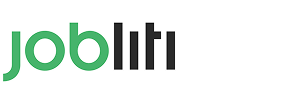The Ultimate Guide to Choosing a Career-Path Quiz That Actually Works

Find Your Dream Job With Quiz
Start the TestWhat Is a Career Discovery Quiz and Why It Matters
Choosing fulfilling work rarely happens by accident; it grows from self-knowledge, strategic exploration, and a repeatable way to connect your strengths to real opportunities. A well-built career discovery quiz synthesizes psychology, interests, and values to reveal patterns you may not see on your own. Rather than serving as a crystal ball, it acts as a decision-support tool that narrows the universe of roles into a shortlist worth testing through projects, conversations, and internships.
Among the most approachable tools, the dream job quiz blends personality indicators with occupational data to surface promising directions for busy seekers. Quality assessments also clarify deal-breakers, such as aversion to constant travel or preference for collaborative environments, which helps you avoid mismatched roles faster. Where generic advice feels vague, a structured questionnaire gives you personalized language to describe your motivators, working style, and must-have conditions.
You’ll notice that meaningful quizzes are not about “right” or “wrong” answers. They look for trends across multiple questions, triangulating your interests, aptitudes, and preferred environments. The outcome is most powerful when matched with reflection prompts: Which results energize you? Which options stir curiosity? Which recommendations feel off, and why? By pairing reflective writing with results, you transform a list of job titles into a practical roadmap. That roadmap supports smarter networking, more targeted skill-building, and clearer interview narratives that show hiring managers exactly where you’ll thrive.
- Clarifies blind spots with evidence-backed insights.
- Converts vague aspirations into concrete role families.
- Reduces analysis paralysis by limiting low-fit options.
- Creates language for resumes, portfolios, and interviews.
How These Quizzes Work: Science, Signals, and Structure
Behind the scenes, modern career instruments use psychometrics, interest inventories, and value hierarchies to craft nuanced profiles. They blend qualitative prompts with scaled items to gauge preferences around problem-solving, autonomy, collaboration, and impact. Good tools also reference labor-market data, so recommendations align with growth sectors, emerging skills, and realistic entry paths. That fusion of inner drivers and external demand makes results both inspiring and actionable.
For budget-conscious explorers, platforms that offer a dream job quiz free can still provide helpful direction when they apply clear scoring, transparent explanations, and sample career matches. Interpretation matters as much as the questionnaire; look for results that explain why each role appears, which traits triggered the suggestion, and what to do next. When you understand the “why,” you’re less likely to chase shiny titles and more likely to test sensible hypotheses with small, low-risk experiments.
The following comparison shows core dimensions most assessments examine, how they inform recommendations, and the types of questions you might encounter while taking one:
| Dimension | What It Reveals | Example Item | Career Implications |
|---|---|---|---|
| Interests | Activities that sustain attention and curiosity over time | “I enjoy turning ambiguous ideas into working prototypes.” | Suggests roles in product design, R&D, or innovation teams |
| Strengths | Domains where you deliver consistent, above-average outcomes | “Colleagues ask me to simplify complex information.” | Points to analysis, consulting, teaching, or comms-heavy roles |
| Values | Non‑negotiables like autonomy, stability, learning, or mission | “I prefer roles with clear social impact over higher pay.” | Leans toward non-profits, public service, or ESG-focused teams |
| Workstyle | Preferred pace, collaboration level, and decision authority | “I thrive when I can set my schedule and priorities.” | Highlights startups, freelancing, or project-based careers |
| Environment | Contextual fit, like remote vs. on-site, quiet vs. vibrant spaces | “Open offices drain my energy by midday.” | Signals need for remote, hybrid, or small-team environments |
Interpreting these signals together creates a layered portrait rather than a single label. The best next step is to pick two roles from your shortlist and prototype each one through job shadowing, micro-courses, or side projects. This approach reduces risk while accelerating learning about what genuinely fits.
Benefits and Who Should Take It
People at every career stage can gain momentum from a structured assessment. Early-career explorers learn vocabulary for interests they haven’t fully articulated, while mid-career professionals uncover transferable strengths that open fresh lanes. Career returners rebuild confidence by identifying low-friction reentry points and skill refreshers that pay off quickly. Even satisfied employees use results to negotiate better-aligned responsibilities, stretching projects, or cross-functional collaborations that keep growth alive.
In academic settings, counselors observe that a dream job quiz students can spark purposeful advising sessions during orientation. That quick intervention helps learners focus electives, choose majors with intention, and line up internships that build evidence for the path they’re exploring. The same clarity assists bootcamp graduates, military transitions, and caregivers reentering the workforce, because each group benefits from seeing multiple viable options rather than one prescriptive answer.
Notable advantages include sharper self-awareness, faster iteration, and improved storytelling. When you can articulate why a role matches your motivators, you write better cover letters and ask smarter questions in interviews. Results also uncover deal-makers that increase day-to-day satisfaction, such as creative autonomy or mission-driven work. Pair the insights with light market research, salary ranges, demand trends, and credential pathways, to ensure your plan balances passion and practicality.
- Gain clarity on strengths you may overlook.
- Translate preferences into targeted roles and industries.
- Eliminate mismatches efficiently to save time and energy.
- Support career pivots with a credible narrative and evidence.
Action Plan: From Results to Real-Life Moves
Insights only matter when they change behavior, so convert your report into experiments. Start by prioritizing two to three promising roles and building a learning sprint for each. A sprint might include a short course, a weekend project, and one conversation with a professional in the field. Score your experience afterward: energy level, ease of learning, and desire to continue. If scores are low, pivot quickly; if scores are high, double down with a deeper project or a volunteer assignment to build proof of fit.
If you begin your journey with a find my dream job quiz free, follow with validation steps like informational interviews, portfolio samples, and targeted applications. Transform recommendations into resume bullets by framing projects with impact metrics, what you built, improved, or optimized. When you test multiple options in parallel, you reduce the emotional stakes of any single application and learn faster what fuels your motivation.
To keep momentum, create a weekly cadence: one outreach message, one skill-practice block, and one deliverable that demonstrates ability. Track feedback signals, responses, referrals, and interview conversions to refine your direction. Over time, the combination of self-knowledge and market feedback becomes a flywheel, guiding you toward roles that fit your talents, values, and lifestyle durably.
- Prototype roles with small, time-boxed projects.
- Translate findings into portfolio artifacts and case studies.
- Seek mentors who can calibrate your trajectory.
- Iterate based on real-world signals, not guesswork.
FAQ: Quick Answers to Common Questions
How accurate are online career quizzes?
They are as accurate as the methodology and the honesty of your responses. Look for tools that explain their frameworks, show reliability data, and provide nuanced interpretations rather than one-size-fits-all titles. Treat results as hypotheses to test, not verdicts.
What should I do if the recommendations surprise me?
Lean into curiosity by prototyping one suggestion through a mini course or short project. If the experience energizes you, explore deeper; if not, capture the lesson and move on. Surprises often reveal overlooked strengths or values.
Can an assessment help with a mid-career pivot?
Yes, because it highlights transferable strengths and preference shifts that accumulate over time. Pair insights with market research to identify adjacent roles where your experience is valued, reducing the risk and time-to-transition.
How long does it take to see real results from using one?
Most people feel clarity within a week if they act on findings immediately. Building momentum, projects, conversations, and interviews, typically takes 30 to 60 days when you work a consistent weekly plan.
What makes a high-quality tool stand out?
Transparency, actionable guidance, and alignment with real labor-market data. The best platforms explain why each role appears, offer next steps, and encourage iterative testing rather than rigid prescriptions.
Conclusion: Turn Insight Into Opportunity
Career clarity emerges when structured self-assessment meets deliberate action. Use your results as a compass, not a cage, and translate recommendations into small experiments that reveal fit through evidence. With steady iteration and attention to both personal energy and market signals, you can transform exploration into a sustainable, rewarding path.
When you consistently test assumptions, tell your story with proof, and cultivate relationships in target fields, meaningful opportunities start to find you. That momentum is the real promise of a thoughtful career exploration process.
Getting Started Today
Pick two roles from your shortlist, calendar an hour for each experiment this week, and invite one professional conversation to calibrate your plan. Keep notes, measure energy, and iterate quickly. The shortest route to fulfilling work begins with a single, well-chosen step taken today.
- Choose two potential roles to prototype.
- Schedule micro-projects and learning sprints.
- Reach out to practitioners for insights and validation.
- Refine your direction using evidence, not hunches.
You’ve got this, clarity compounds when curiosity meets action.
